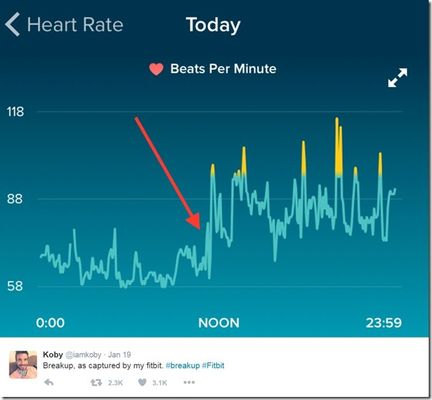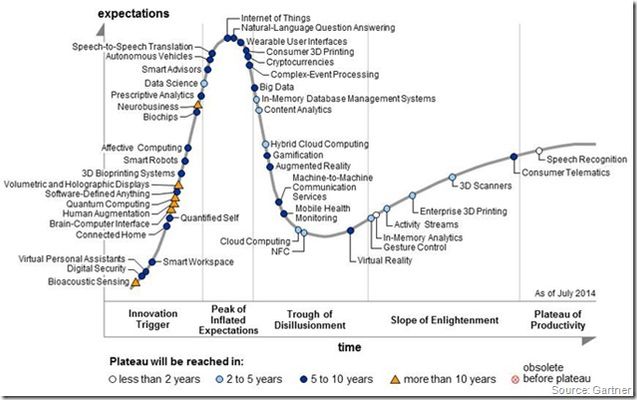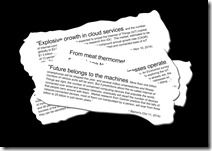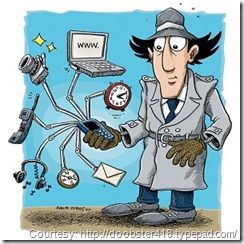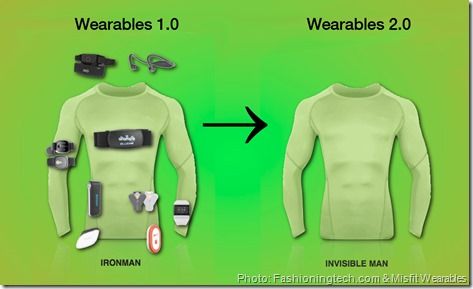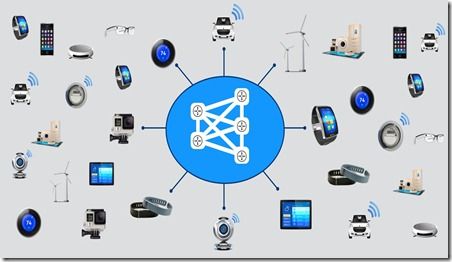wearables
20 TopicsOur Five Senses on Sensors
Aristotle (384 - 322 BC) is credited as the first person to classify our five sense organs: sight, smell, taste, touch, and hearing and Immanuel Kant, a famous philosopher from the 1700s said that our knowledge of the outside world depends on our modes of perception. Our highly developed organs of the eyes, ears, nose, tongue and the skin on your hand provide the sensing equipment necessary to send that information to the brain. In some cases, one of the sensors might not work properly in the case of the blind or deaf, yet the four other senses are heightened and exceed normal operation to make up for the missing information. Daniel Kish, for example, uses echolocation like a bat to see the imprint of the sound waves as they bounce back. Pretty cool, eh? Today, we're building gadgets that are used in conjunction with or completely taking over the the tasks of the eyes, ears, nose, tongue and hands. Things that were always part of our body are being replaced with micro-chipped things that act like, attach to - or better yet - integrate with our body. Sight: Of course there are security cameras to help us see our homes when we are away and most of us have heard of Google Glass but there are now eyeglasses being prototyped by BMW’s Mini division. They are combining the wearable with the connected car. These glasses communicate with the car via WiFi and offers a heads-up display like no other. While you can still see the real world, the glasses offer an overlay of speed, navigation, backup cameras and more. You can see just how close you are to the curb from the wheel's point of view. You can also look at a street sign and have it come to life with other overlays or additional info. While most of the data is just telemetry for now, engineers are looking to possibly incorporate driving features within the view. This is where IoT gets interesting - where one is used to compliment another. Also, Swiss engineers have developed a camera based on the human retina. Understanding the biology of the real thing, they've made a more efficient camera. Smell: Although there were attempts earlier, in the 1940-50's, Hans Laube created a system called Smell-O-Vision which would emit odors during the movie so the audience could smell what was happening in the movie. It was only used once. GE also developed a system in 1953 that they called Smell-O-Rama. Now you can get a smell app on your phone. ChatPerf is a thumb-drive-sized atomizer that plugs into your mobile device so it can be triggered to release specific odors on command. But those are scents out. Machines that can whiff stuff in have been around awhile. Think of your smoke, carbon-monoxide or radon detectors. Today we have wearable vapor sensors that can smell diabetes. Scientists have figured out how to use a sensor to identify the odor from melanoma to detect this form of skin cancer. Those human skin cells give off an odor that doctors can pick up with a sensor. And scientists in Israel who have already developed a nanotechnology breath analyzer for kidney failure are working on one that can distinguish between the breath of a lung cancer patient verses a healthy exhale. Crazy! Hearing: According to U.K. firm Wifore Consulting, Hearable technology alone will be a $5 billion market by 2018. Roughly the size of the entire wearable market today. Ears are able to capture things like oxygen levels, electrocardiograms, and body temperature. While sound drives the bulk of technology within this space, those ear buds could soon have technology that not only sends sounds but also captures some of your body information. And it is small enough and discrete to wear everywhere rather than carrying a mobile device. Initial uses trend with fitness. Ear buds that play music but also give you feedback on your workout. There are also smart earrings that monitor heart rate and activity. I've always said that there will come a time when we all have IPv6 chips in our ear and we'll just tug the lobe to answer a call. Carol Burnett would be proud. Touch: Want to give a robot the ability to feel? Done. Researchers have developed a flexible sensor able to detect temperature, pressure and humidity simultaneously and a big leap towards imitating the sensing features of the human skin. While still in the early stages, future sensors could be embedded into the "electronic skin" of prosthetics, allowing amputees sense environmental changes. Another is BioTac, a fingertip that can sense force, temperature, and vibration—in some cases better than a human finger. With laser 3D printing, some orthotics can be delivered in hours rather than months. Taste: Sweet, sour, salt and bitter used to be the domain of the tongue. Soon, electronic 'tongues' could be used to monitor the quality control of bottled water. Using chemical sensors, researchers in Texas have demonstrated that the electronic tongue can 'taste' different solutions. The sensors responded to different combinations of the four artificial taste elements with unique color combinations of red, green and blue. This enabled the device to analyze for several different chemical components simultaneously. I've written about smart chopsticks that can detect oils containing unsanitary levels of contamination, a fork that monitors how many bites you take and a smart cup that counts the amount and calories you drink. This is the Internet of Food. Wearables make technology personal and our five senses are what helps us navigate life, gives us perspective. Who would have thought that an individual's perspective would someday become embedded within coded software. ps Related: Wearables + Connected Cars = IoT Heaven Five ways retailers can start using IoT today Lesson: How Do Human Sensors Work? Hearables - the next big thing in wearable tech Human Touch: Sensor Lets Robots 'Feel' They've Got It Licked - Artificial Sensors Can Taste What's In A Complex Mixture Innovative Technology Powers the Wearables Movement My IoT Articles Technorati Tags: iot,wearables,senses,sensors,things,humans,hearables,sight,sound,smell,touch,taste,silva,f5 Connect with Peter: Connect with F5:1.8KViews0likes0CommentsWearing Emotions on Your Sleeve...Literally
Imagine if your emotions and feelings could be measured, tracked and included in a data graph. I'm sure you've heard the saying 'wearing your heart on your sleeve' to indicate that someone expresses their emotions freely or exposes their true emotions without caution. This can be good in that you become open and vulnerable when showing your true feelings but can jade areas like composure in situations where you might be frustrated or irritated. I tend to be fairly open with my emotions. There are a few stories about the origin of the saying going back to the Middle Ages. Emperor Claudius II felt unattached men make better warriors so he outlawed marriage. To alleviate some of the grievances, every year during the Roman festival honoring Juno, he'd allow temporary coupling where men drew names to determine who would be their lady friend for the year. The man would wear her name on his sleeve for the festival. Around the same time, when knights performed jousting matches, they'd dedicate their match to a lovely lady of the court. By wearing her hanky around his arm, he was signaling that he was defending her honor. And in Shakespeare's Othello, Iago confesses, For when my outward action doth demonstrate The native act and figure of my heart In complement extern, ’tis not long after But I will wear my heart upon my sleeve For daws to peck at. I am not what I am. – Othello, Act 1, Scene 1, 61–65 Whatever the origin, humans are emotional creatures. We typically make choices based on emotion, even though we'd like to think it was a rational decision. We may try to hide our emotions as to not upset or reveal something to another person. Often called a Poker Face. But imagine if your emotions and feelings could be measured, tracked and included in a data graph. Other than a polygraph. Daydream no more. There are now wearables that track your emotions. This is not your father's old-skool mood ring but devices that read your current emotional state and attempts to sooth and lower stress levels by encouraging deep breaths and relaxation techniques to get you through the haze. Sensors that gather skin temperature, sweat gland activity and blood pulse along with movement gauge your activity level. From that, it generates a graph on your mobile phone so you can see when your stress levels peaked and the mood at the time. You can see real time or over the course of the day. Emotional analysis in your pocket...or sleeve if you got one of those runner's arm band things. I'm sure someone will create a shirt that has color changing sleeve threads depending on a person's emotional state. The Iagonaut. This is not the future but today. A Fitbit captured the moment of a broken heart during a relationship ending phone call. This man was wearing his Fitbit when the unexpected call came and his daily graph tells the whole story: Koby (@iamkoby) shared his heart wrenching moment (and graph) on Twitter and it saturated the internet. The red arrow indicates the moment that the news hit him. Instantly, his heart rate jumped from 72 to 88 beats per minute and stayed high for the rest of the day. Clearly this healthy, athletic person was under duress and if you couldn't tell by the yellow peak marks, he had trouble sleeping that night. Talk about exposing your emotions with technology. Would you share your sleeve with the world? ps Related: Fitbit captures exact moment man's heart breaks The Origins of Wearing Your Heart on Your Sleeve Forget fitness, this wearable tracks your emotions Connecting the Threads The Digital Dress Code Wearables Head to Tail Gartner Says Worldwide Wearable Devices Sales to Grow 18.4 Percent in 2016 Technorati Tags: iot,wearables,emotions,humans,stress,sensors,silva,f5 Connect with Peter: Connect with F5:1.3KViews0likes0CommentsIs IoT Hype For Real?
It is only fitting that the 20th anniversary of the Gartner Hype Cycle has the Internet of Things right at the top of the coaster. IoT is currently at the peak of Inflated Expectations. The Gartner Hype Cycle give organizations an assessment of the maturity, business benefit and future direction of more than 2,000 technologies. The theme for this year's Emerging Technologies Hype Cycle is Digital Business. As you can see, being at the top really means that there is a ton of media coverage about the technology, so much so that it starts to get a little silly. Everyone is talking about it, including this author. What you can also so is the downward trend to follow. This is the trough of disillusionment. Gamification, Mobile Health Monitoring and Big Data all fall into this area. It means that they already hit their big hype point but doesn't necessarily mean that it's over. The slope of enlightenment shows technologies that are finally mature enough to actually have reasonable expectations about. Each of the technologies also have a time line of when it'll mature. For IoT, it looks like 5 to 10 years. So while we're hearing all the noise about IoT now, society probably won't be fully immersed for another decade...even though we'll see gradual steps toward it over the next few years. Once all our people, places and things are connected, you can also get a sense of what else is coming in the Innovation Trigger area. Come the 2025 time frame, things like Smart Robots, Human Augmentation and a Brain Computer Interface could be the headlines of the day. Just imagine, instead of having to type this blog out on a keyboard, I could simply (and wirelessly) connect my brain chip to the computer and just think this. Hey, Stop reading my mind!! ps Related: Gartner's 2014 Hype Cycle for Emerging Technologies Maps the Journey to Digital Business Chart of the Week: The hype cycle of emerging technologies The Internet of Things and DNS F5 Predicts: Internet of Things Drives Demand for 'Social Intelligence' Internet of Things OWASP Top 10 The Icebox Cometh Technorati Tags: iot,things,sensors,nouns,gartner,hypecycle,media,silva,f5670Views0likes0CommentsThe Top 10, Top 10 Predictions for 2016
The time of year when crystal balls get a viewing and many pundits put out their annual predictions for the coming year. Rather than thinking up my own, I figured I’d regurgitate what many others are expecting to happen. 7 Future Predictions for the Internet of Things – IoT is one of the hottest terms and trends. From connected cars, homes, businesses and more, connected devices are becoming more prevalent in our lives. Stable Kernel looks at the future economic growth, development of smart cities, wearables, privacy challenges and how voice commands will become the norm. Top 10 Humanoid Robots Designed To Match Human Capabilities And Emotions – While once a dream of The Jetsons, companion robots in the home will become as common as pets, even if the pet is a robot. WT VOX explores whether robots could fully replace humans by 2045 as some predict and takes a look at the top 10 that are starting to match human capability. The top security threats of 2016 – ZDNet digs into McAfee's 2016 cybersecurity threat report covering areas like hardware, ransomware, cloud services, connected cars and the warehouses of stolen data. From the Ashley Madison hack, to Jeeps taken off-road and the TalkTalk breach, digital infiltration is now a daily occurrence and no one is immune. Forrester’s top 10 predictions for business in 2016 — and what they mean for tech – Computerworld summarizes Forrester’s top 10 predictions and how 2016 will be the year that the companies that thrive will be those advancing down the customer obsession path. They look at critical business issues like loyalty, analytics, personalization and how privacy will become a value to which customers will respond. You need to live a customer-obsessed operating model to survive. IBM predicts tech world of 2016 – At number 5, IBM has published its 6th annual Five in Five - where it predicts five innovations that will change all of our lives in the next five years, with mind-reading machines apparently set to be interpreting our thoughts by 2016. From generating our own energy to no more passwords to almost everyone having some sort of mobile technology, IBM Labs is exploring these emerging technologies. DDoS Predictions for 2016, IBM Insights – Also from Big Blue, they are sharing insight into new types of DDoS attacks that are to be expected during the coming year. DDoS is no longer a nagging problem but a bona fide technique to disable a company’s resources. BitTorrent, malicious JavaScript and Temporal Lensing DDoS (pdf) attacks are all explained. As I’ve mentioned before, there have always been protesters and activists - some write letters, some picket on the sidewalk, some throw rocks and with the advent of the internet, now you can protest (and more) by creating digital havoc. 5 IT industry predictions for 2016 from Forrester and IDC – CIO.com hits on the 2016 predictions of IDC and Forrester, two of the largest analyst firms. In their distillation, there could be a bleak future for legacy vendors since according to IDC, ‘by 2020, more than 30 percent of the IT vendors will not exist as we know them today.’ There will also be some cloud consolidation, big data gets even bigger and traditional enterprises will turn into software companies. Software developers will become a scarce commodity. IDC Software Licensing and Pricing Predictions 2016: Top 10 Predictions – And speaking of software, Amy Konary of IDC writes about focus areas like the growth of subscription and outcomes-based pricing, the real cost of licensing complexity, usage models in IoT, the business model impacts of the convergence of cloud, mobile, social, and big data technologies. 10+1 Commandments For Companies Developing Wearable Health Trackers – Many of us will be getting a wearable or two this holiday season so ScienceRoll rolled up it’s 10+1 commandments every company developing wearable health trackers should follow. Practical value, online communities, long live batteries and gamification are what user’s desire. We know you want to make money but focus on helping people live a healthier life. In-depth: Top 10 Internet of Things companies to watch – We started with IoT and figured I’d caboose this with another. RCRWireless digs in to the top players in both Industrial IoT and Consumer IoT. Many of the names are familiar: Cisco, IBM, ATT, Google, GE, Samsung and a few others are already hedging their future on all these connected nouns. See what these organizations are doing both internally and externally to embrace IoT and take advantage of this proposed multi-trillion dollar market opportunity. And if you want to see if any of the previous year’s predictions came true, here ya go: The Top 10, Top 10 Predictions for 2015 The Top 10, Top 10 Predictions for 2014 The Top 10, Top 10 2013 Predictions The Top 10, Top Predictions for 2012 ps Technorati Tags: 2016,predictions,future,technology,security,cloud,iot,silva,wearables,f5,top10 Connect with Peter: Connect with F5:602Views0likes0CommentsIoT Effect on Applications
As more applications are needed to run those Things, traditional infrastructure concerns like scale and reliability will become paramount. Additional challenges with identity and access, improving the user experience, and the need for faster provisioning of services could overwhelm IT departments. A robust, scalable and intelligent infrastructure will be necessary to handle the massive traffic growth. IT professionals are tasked with designing and building the infrastructure that’s ready for the challenges that lie ahead, including IoT. But many of today’s traditional architectures will buckle under the increasing demand of all the connected devices. According to IDC, the rate at which applications double in the enterprise is every four years. This is likely to be cut in half as more IoT devices need applications supporting them and organizations need to be ready for the deluge. The Domain Name System (DNS) is the most likely method for connected devices to locate needed services, and it’s potentially the means by which people will locate the devices themselves. There might be other schemas in the planning process, but those would require the adoption of a new technology naming standard, which would be costly, slow and highly unlikely. Clearly, security must also be present since Iot has the potential to weave vulnerabilities throughout the system. Unless organizations remain proactive, the ubiquity of connected devices presents a gold mine for attackers. Outpacing attackers in our current threat landscape will require more resources in order to minimize risk. Organizations will need to continue to harden our own infrastructures and look to cloud services like DoS mitigation to lessen the effects of attacks. At the same time, the explosion of embedded devices may well be the event that drives more mainstream IPv6 adoption. There are several advantages to IPv6 such as a large namespace, address self-configuration, and the potential to remove Network Address Translation (NAT) problems. The data center will require some planning to embrace this shift. Components such as routers, firewalls, and application delivery controllers will need to be IPv6-ready, capable of understanding the protocols and data that devices will use to communicate. To ensure security, intelligent routing, and analytics, networking layers will need to be fluent in the language your devices use. Understanding these protocols within the network will allow traffic to be secured, prioritized, and routed accordingly. Recognizing and prioritizing these messages will enable better scale and manageability of the onslaught of device traffic and data. Intelligence will also be needed to categorize what data needs attention (like a health monitor alert) and what doesn’t (temperature is good). According to TechTarget, to ensure high availability of IoT services, enterprises must consider boosting traffic management and monitoring. This will both mitigate business continuity risks, and prevent potential losses. From a project planning standpoint, organizations need to do capacity planning and watch the growth rate of the network so that the increased demand for the required bandwidth can be met. ps Related The Digital Dress Code Is IoT Hype For Real? What are These "Things”? IoT Influence on Society CloudExpo 2014: The DNS of Things Intelligent DNS Animated Whiteboard The Internet of Me, Myself & I Technorati Tags: devices,f5,iot,m2m,security,sensors,silva,things,wearables,dns,applicatons Connect with Peter: Connect with F5:561Views0likes0CommentsIoT Influence on Society
”Things” and the applications/services that support them are changing the way we live. Wearables in the sports and health sectors will grow to nearly 170 million devices by 2017 — an annual growth rate of 41 percent. Specific to the enterprise, if you thought the Bring Your Own Device (BYOD) craze was a headache, just wait until button cameras, smart watches, fitness trackers, and connected glasses are a daily occurrence in the office. Workplace wearables will be a huge challenge in the coming years as more devices, clothing and pretty much any 'thing' with a chip or sensor become commonplace in society. PricewaterhouseCoopers (PwC) in The Wearable Future report found that 77% of respondents thought that a top benefit of wearable technology is the potential to make employees more productive and efficient. If the technology is simple to use and integrates with other devices, that should boost productivity and lift profits. Industries that could benefit immediately from the wearable market include: Entertainment will be more 'immersive and fun' Social Media gets real time updates from clothes Gaming can be more visually and physically engaging Advertisers will also want that space someone’s back Healthcare will track vitals Retail could offer “pleasant, efficient” shopping experiences Clothing is just one example of many. Organizations will also be able to manage assets and office building more efficiently. Imagine the connected home automation today, but geared toward commercial properties. Security, HVAC, assets, lighting, employee access and so forth is all handled by sensors and monitors. Smart cities are already being built with IoT on a metropolis scale. Energy, environment, street lights, sanitation, water supply, transportation and other civic related functions are all automatically controlled by meters. The automotive industry is also taking advantage of sensors with self-driving cars, in car Wi-Fi, seamless integration with mobile phones, car to car communications, software updates and even their own in-car apps for streaming entertainment, navigation and other connected activities. By all accounts, everything that is a noun – a person, place or thing – at some point, will have or wear a sensor/actuator/IP-chip that gathers some sort of data and all that traffic is headed for a data center somewhere. The digital society has emerged. ps Related The Digital Dress Code Is IoT Hype For Real? What are These "Things”? CloudExpo 2014: The DNS of Things Intelligent DNS Animated Whiteboard The Internet of Me, Myself & I Technorati Tags: iot,things,wearables,sensors,clothes,society,silva,f5 Connect with Peter: Connect with F5:501Views0likes0CommentsThe Digital Dress Code
Coming to an office near you. If you thought the Bring Your Own Device (BYOD) craze was a headache, just wait until button cameras, smart watches, and spy glasses (already here) are a daily occurrence in the office. Workplace #wearables will be a huge challenge in the coming years as more devices, clothing and pretty much any 'thing' with a chip or sensor become commonplace in our society. The device explosion with IoT (Internet of Things) will be much larger than any of these mobile phones we carry around. A couple new reports examine the impact of IoT on businesses. PricewaterhouseCoopers (PwC) released a report on wearable technology after surveying 1,000 consumers, 314 of which use some form of wearable, as part of "The Wearable Future" report. Some key findings included that 77% of respondents thought that a top benefit of wearable technology is the potential to make employees more productive and efficient. Honestly, when I read that I immediately thought of my boss's hologram standing behind me in my home office watching my work. 70% expect that their office should allow the use of wearables...probably the same folks who wanted to bring their own tablet and 46% felt that organizations should fund wearables rather than the dreaded BYOD. The idea is that if the technology is simple to use and integrates with other devices, that should boost productivity and lift profits. Even so, there needs to be significant investment to ensure the camera shirt buttons can talk to Exchange, ya know. The biggest concerns, according to PwC, include the risk of security breaches, invasion of privacy, tech dependence, having too many devices and on a more human level, not being able to relate to others or simply looking silly with all those attachments. PwC also looked at the industries that will capitalize on the wearable market. Entertainment will be more 'immersive and fun'; Social Media gets more real time updates from your clothes; Gaming can be more visually and physically engaging; Advertisers will want the space on your back; Healthcare will track your vitals; and Retail could offer “pleasant, efficient” shopping experiences. Business Insider recently released a report looking at the device growth They feel that by 2019, IoT devices will more than double the size of the smartphone, tablet, PC, wearable and connected car combined. That's huge. All the software, hardware, maintenance and management of IoT could add $1.7 trillion to the global economy by 2019. They also feel that the main benefit of IoT will be the efficiencies and cost savings by giving the user more control. But, there are sill few standards and even less compatibility so that needs work, not to mention the security risks inherent in these nouns. The processing power, storage, cameras, sensors and everything else will far surpass the USB-stick risks of years past, plus the potential of all this corporate data getting stored in personal clouds could spell big trouble. And how are all these nouns going to found on the internet? DNS of course! Once all these various wearables hit the office, DNS will be the thing that allows us people to find them threads. I truly feel that DNS will be one of the most strained technologies as more connections happen in the office and will be discussing this trend at the ThingsExpo - which is part of SYS-CON Media's CloudExpo in Santa Clara this week. ps Related: Employees Excited, Concerned About Wearables in the Workplace Medical Devices: Safeguarding the Healthcare Revolution How Smart, Connected Products Are Transforming Competition The 'Internet of Things' Will Be The World's Most Massive Device Market And Save Companies Billions Of Dollars As Wearables Get Hot, These 6 Industries Are Poised to Capitalize Why the Internet of Things will turn data computing on its head My Sensored Family The Internet of...(Drum Roll Please)...Band-Aids?!? The Breach of Things Technorati Tags: iot,things,wearables,workplace,sensors,silva,devices,byod,smart,f5,big data,privacy Connect with Peter: Connect with F5:500Views0likes0CommentsOh, Is That The Internet You're Wearing?
I can see it now... [Enter Dream Sequence] 'ALOHA! We're here at the Red Carpet Event at the 2021 Web Movie Awards! All the stars are here wearing the latest in fashion trends. Oh, here comes DigiTom wearing his underarm sweat blocker shirt that also calculates how much moisture he is losing and how many ounces of water he needs to replace that sweat. Cool stuff. Ah, and here comes Hank Hologram and what is amazing is how his shoes continue to change colors depending on his mood. Ooop...With all those screams, it must be super director Steve Streamer who has 500 little HHDD cameras sown into his clothes and he is making a live action movie of this event!' Can't wait to see who plays me!' Wearables are one of the hottest trends pushing the Internet of Things. Many of us are familiar with the sensor bracelet things that keeps track of steps, distance, calories burned and all the things a pedometer used to do. But now there are sensors stitched in to our actual clothing! Nike recently patented a shirt that provides 'enhanced body position feedback.' Basically you are wearing your coach as an outfit. It is a wearable instruction shirt that helps improve an athlete’s form or body positioning. A Korean artist has released a kinetic wearable, Metamorphosis, which features a woman’s dress and man’s blazer that detect when you’re drunk. When consuming alcohol, the shoulders on the dress expand and transition between different colors, while the collar on the blazer rise to hide the wearer’s face. The dress is designed to show how a female’s confidence increases when consuming alcohol but the blazer hides the male when it senses too much alcohol on his breath. I'm not incoxitated ossifer! A Brazilian designer has won an award for her lingerie that illuminates when touched. While not yet in production, there are micro sensors built into the bras and underwear and brings the red light district into your own home. And of you think these are one-offs, this October in Portland there will be FashioNXT’s first annual Wearable Technology Fashion Competition. They are looking at ways to bring wearables into mainstream adoption with the focus on ensuring the technology blends into the essence of the clothing. To top it all off, there is an interesting article about the 5 psychological challenges facing wearables. It is about behavior change technology and if these apps can actually change what a person does. The 5 challenges include: Apathy - if you're not motivated to change, it doesn't matter. Simplicity vs. Complexity - You can’t just shove complex psychology into an app and expect an incredible user experience. Personalization vs. Scale - Psychology is generally applied in a clinical setting, with the best results from 1:1 interactions & does not scale. Relapse - The process of anticipating/preventing relapse is integral to lasting behavior change. This important step is almost always overlooked in technologies Integration with Real Life - There exists a natural barrier between doing something on your phone and taking action in real life. With 82% of American wearable tech users believing that it has enhanced their lives, I'm sure this is just the beginning of the Wearable Internet. ps Related Nike Patents Golf Shirt Design That Could Double as Coach A Dress that Detects When You're Drunk Lingerie that lights up? Brazilian designer wins award 10 Hottest ‘Top-To-Toe’ Wearable Gadgets 5 psychological challenges facing wearables, quantified self and behavior change apps Wearable Technology – UK and US Facts & Figures Making bearable wearables Fashioning Health & Wellness: An Interview with Misfit Wearables Technorati Tags: iot,wearables,sensors,things,clothes,silva,f5 Connect with Peter: Connect with F5:464Views0likes0CommentsOK 2015, Now What?
Once again after a couple weeks off and the calendar odometer flipping another year, I'm sitting here with a blinking curser wondering what to write about. And the thing that pops into my head are Things. The Everythings. While 2014 was the hype year for the Internet of Things (IoT), according to many 2015 will be the year that IoT...and really the Internet of Everything, becomes mainstream. It is occurring this week at CES where tons of smart cars, smart kitchens, smart watches, smart televisions, smart wearables, smart appliances, smart healthcare devices, smart robots, smart belts and anything else that has a sensor, a chip and is connected to the internet will be on display. I wonder if terms like smart aleck and smarty pants might soon be in vogue. While the Hover skateboard originally slated for 2015 is still in the works, there is a massive amount of info related to Things and how they are going to change society, change how we live and change us, as people. Business Insider has a fascinating slide deck showing the most important ways the Internet of Everything market will develop, the benefits newly connected devices will offer consumers and businesses, and the potential barriers that could inhibit growth. IoT will be the largest device market, by far, and will soon be larger than the PC, tablet, and smartphone markets combined. The software to run IoT along with systems to make sense of all that data will be huge. Areas like enhanced customer service and improved use of field assets have already been realized by early adaptors. Moving forward, new business models will blossom and services will become more important than simple products. How they all work together will be key. IoT is not without it's challenges. Threats to data security, physical security, the security of devices, regulations, privacy, encryption, authentication and a host of other issues all need to be addressed before this can really take off. Anyone remember the Cloud a couple years ago? Themes are the same. While consumer devices seem to be the focus today, businesses will benefit with greater operational efficiency along with helping them manage plants, property and equipment. Trend Micro also has a good IoE 101 article with 5 easy steps to explain IoT and IoE to folks. Over on LinkedIn, Jeremy Geelan has put together a great list of the many various, although not exhaustive, IoT events for 2015. He's revised it once already and just might again as more arrive. Over on Computer Business Review, they have their Top 6 Wearable Predictions for 2015 and Gartner is predicting that by 2017, 30% of the wearables will be invisible to the human eye. No matter what, all these things will need a robust, scalable and intelligent infrastructure to handle the massive traffic growth. If you thought our mobile phones & tablets generated a lot of traffic, our Things will be a multitude of what mobile contributed. Get ready now... ps Related: The Internet of Everything: 2015 Slide Deck Top 6 Wearable Predictions for 2015 The 40 Most Important Internet of Things Events in 2015 How Smart, Connected Products Are Transforming Competition IoE 101: How to Explain All Things Smart, Wearable, and IoE A Third Of Wearables To Become Invisible by 2017 Is IoT Hype For Real? Internet of Things OWASP Top 10 The Top 10, Top 10 Predictions for 2015 CloudExpo 2014: The DNS of Things Technorati Tags: 2015,iot,things,sensors,ces,f5,infrastructure,security,silva,wearables Connect with Peter: Connect with F5:461Views0likes0CommentsWhat are These "Things”?
The Internet of Things (IoT) refers to the set of devices and systems that interconnect real world sensors and actuators to the internet. This includes many different types of systems, including: Mobile devices Smart meters & objects Wearable devices including clothing, health care implants, smartwatches, fitness devices, etc. Internet connected automobiles Home Automation Systems including thermostats, lighting, home security Other measuring sensors for weather, traffic, ocean tides, road signals and more These systems connect to the internet or gateway in a variety of manners including long range WiFi/Ethernet using IP protocols (tcp/udp, including cellular), short range Bluetooth low energy, short range Near Field Communications, or other types of medium range radio networks. Point to point radio links and serial lines are also used. There are many sensors that connect directly to the internet and there are others that may need specialized IoT networking hardware. Message Queue Telemetry Transport (MQTT), for instance, is a subscribe and publish messaging protocol designed for lightweight machine to machine (M2M) communications. Originally developed by IBM, is now an open standard but its primary purpose is to allow a device to send a very short message one hop to a MQ broker and to receive commands from that broker. It needs a gateway or receiver (broker) to communicate. Basically, every message is published to a location, called a topic, clients (the sensors) subscribe to various topics and when a message is published to the topic, the client/sensor gets it. The systems themselves typically fall into a few classes of categories. The smallest devices have 8-bit embedded system on chip (SOC) controllers but no operating system; then there are ones that have a limited 32-bit architecture, like a home router, with or without a base OS and; the most capable systems have either full 32-bit or 64-bit operating platform such as a mobile phone. You might even use your mobile phone to send the data, via the internet, from the IoT device to the destined application. Not only are we interacting with these devices, they are interacting with other machines to send specific Information, which is called Machine-to-machine technology. The M2M fabric works in conjunction with the various systems that support wearables, home networks and the widely deployed sensors. Some areas that you can focus on as IoT progresses include: Focus on scale of core capabilities like DNS and availability Evaluate readiness to federate access across cloud apps Examine state of identity and access to manage millions of users Strategize on automation for provisioning and auto-scale According to Gartner, the Internet of Things is not a single technology but a concept with embedded sensors driving the trend, real time support and learning having a social impact and allows businesses to make situational decisions based on the sensor’s information. With that, no single architecture can address all the potential IoT device areas and requirements of each but a scalable architecture that can add or subtract resources to support a wide variety of scenarios prepares organizations for the impact IoT will have. You can check out F5's The Internet of Things-Ready Infrastructure White Paper to learn more about how an IoT–ready environment can enable service providers and enterprises to begin taking advantage of this societal shift without a wholesale rip-and-replace of existing technology. ps Related Is IoT Hype For Real? Internet of Things OWASP Top 10 Internet of Food The Internet of Me, Myself & I Oh, Is That The Internet You're Wearing? The Analog Generation The Internet of Things-Ready Infrastructure White Paper Technorati Tags: iot,things,devices,sensors,wearables,silva Connect with Peter: Connect with F5:408Views0likes0Comments

